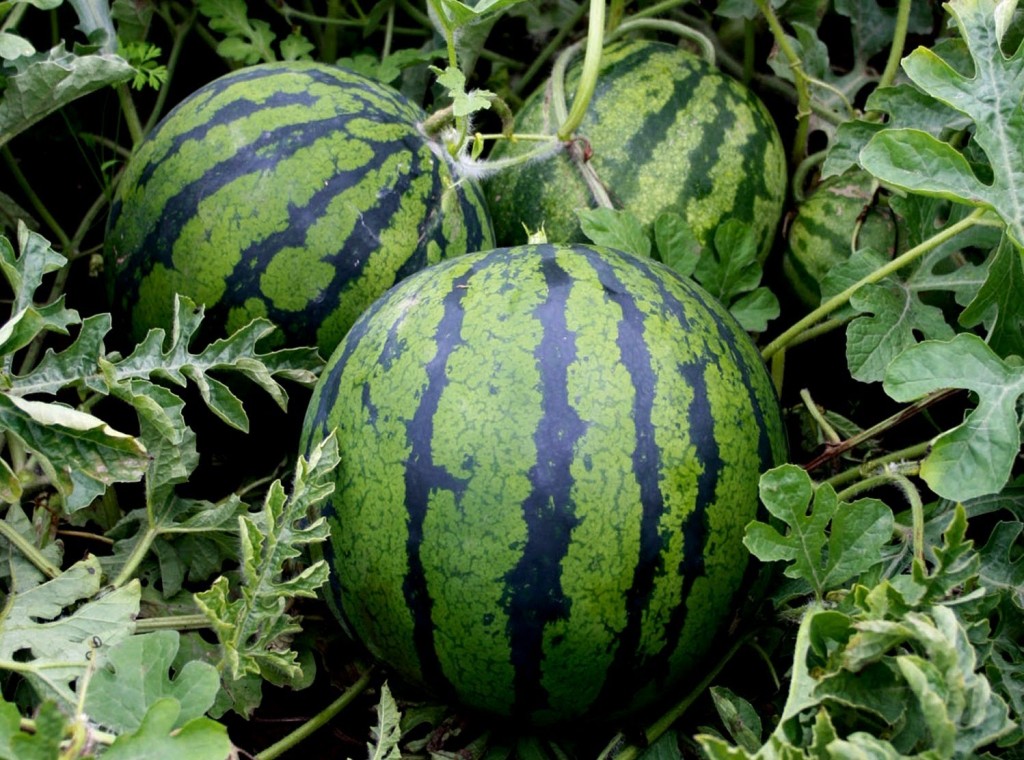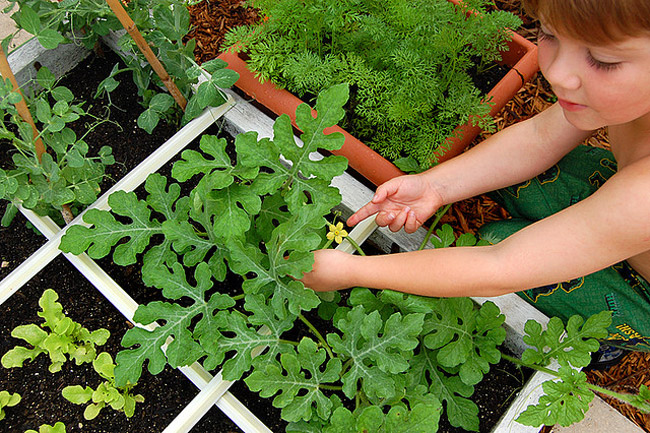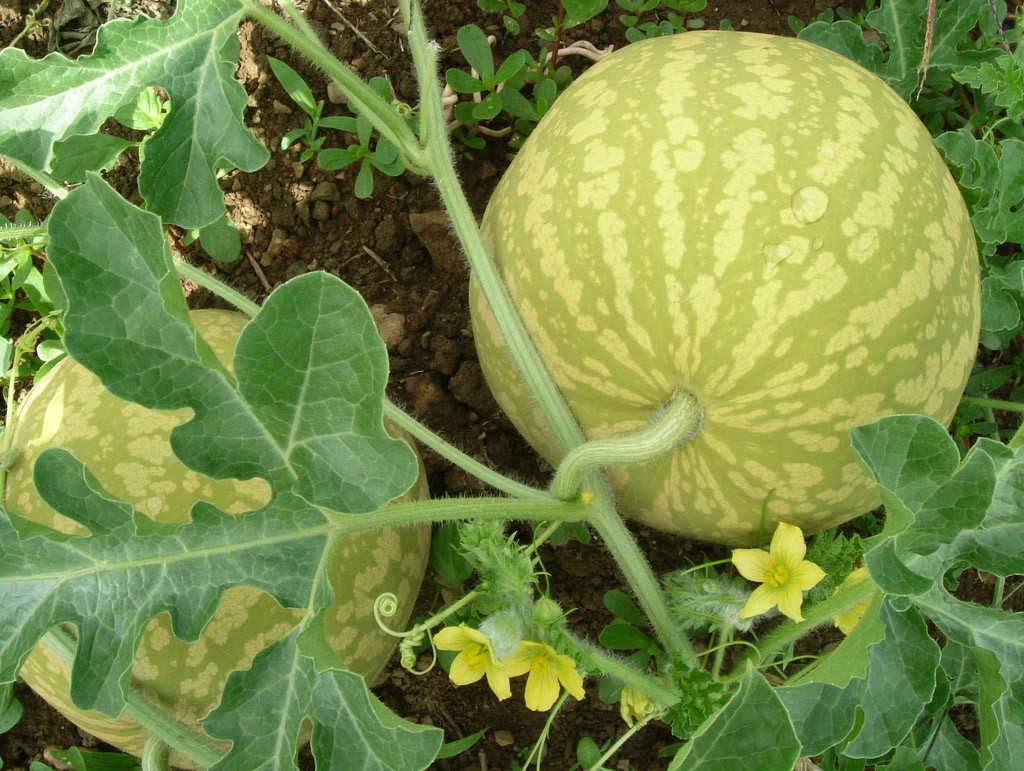How to grow a watermelon of the Ogonyok variety
Content
Features of the variety
Many have heard about this amazing variety of bashtans. It is not for nothing that the light is very common among lovers of summer cottages and vegetable gardens. From the moment of emergence to the beginning of ripening of the fruit of a watermelon, it takes from 71 to 87 days. The shape of this berry is spherical, its weight reaches 1.7, and sometimes 2.7 kg. The Ogonyok got its name thanks to its bright red pulp.
The watermelon has a very thin peel, dark green in color, the seeds are small. It is excellently grown in the lands of the non-black earth. Due to its early maturity and good resistance to cold weather conditions, it is possible to eat ripe watermelon of the Ogonyok variety faster than some foreign hybrids. In terms of maturation, the light is ahead of such super-early hybrids as Trophy, Dalby, Crimson Sweet, Victoria. We do not argue that hybrids tend to gain sugar very early, and therefore most of them are sold unripe, after some manipulation of the color.
Due to the very thin skin of a watermelon, it is very problematic to transport it, because even the slightest damage can become a breeding ground for microorganisms and pathogenic bacteria. Many experts claim that our domestic Ogonyok is a mixture of the Sugar Kid variety and a Chinese hybrid. Thanks to this selection, large fruits up to 4 kg were obtained with a thick skin, but without stripes. Farmers like it because of its good transportability and ability to long-term maturation.
How to plant
The light is not whimsical, it can be grown directly in the open field, as well as in greenhouses. Seeds are planted in the ground from the second half of April to 1 week of May. If seedlings are used, they are planted from the second half of May to 1 week of June. Planting scheme: watermelon bushes should be at a distance of 60 cm to 1 meter, row spacing - 1.4 meters.
The soil should be light, breathable and permeable. The soil must be warmed up, if you need additional heat, you can cover the ground with oilcloth, until shoots appear. The night temperature should not drop below 15 degrees, otherwise the seeds will lie in the ground for a long time. Planting depth - 8-10 cm. In greenhouses, watermelon bushes Ogonyok can be planted more often, at a distance of 70 cm from each other. If you use trellises, you can hang the fruits in nets. using trellises, (fruits can be hung in nets).
It is imperative to process the seeds before sowing. To do this, seeds are soaked in a prepared weak solution of potassium permanganate overnight, washed with clean water or soda solution, and dried. Some experts insist on hardening the seeds additionally at 0 ° C. In principle, Ogonyok is cold-resistant enough, and you can do without this procedure.
If you want to enjoy the fruits of the Fire early, use growing seedlings. Bushes sprouted up to 4 leaves are planted after the last frost. When one stem is formed, pinching is carried out, that is, the side shoots are removed, and 2-3 ovaries are left on the bush.Next, you should adhere to the watering regime, procedures for loosening, feeding and dusting the lashes in order to protect them from turning over by the wind.
Video "Varieties of watermelons and their cultivation"
Care and watering
To accelerate the growth of watermelon, you can use various shelters: simple individual or group film. When covered with oilcloth, the temperature in the soil rises, which means that the maturation of the Fire is accelerated by two to three weeks. This method will also protect plants from some pests.
If you are growing watermelons in an arid region, you can build shelters with vines or wire frames. They should be removed on a cloudy day so that the plants are not roasted under the scorching sun. If you do not remove the shelters, infection can develop, and you will also have to manually carry out pollination. In order for the bees to work in your garden, plant special melliferous plants near the watermelons, or sprinkle the melon with a solution of honey or sugar.
Keep an eye on the soil cover; when it dries up, the soil needs to be loosened, weeded. The opinion that weeds shade the bastans and that a good harvest will be obtained is erroneous. Weeds need to be dealt with like in any other garden bed. Melons and gourds are very fond of the sun.
Watering should be organized in such a way that water does not fall on the bush or root, but 40 cm away from it. Excess flowers and ovary are removed. 3-4 fruits are enough for one bush. If there is no time for these procedures, the watermelon will still grow and ripen, but of a smaller size.
Feeding for watermelon light is very simple: it is prepared from the mowed nettle grass. The nettle in the bucket needs to be poured with water, it stands for three days until the smell appears. Dilute the solution with water 1: 1 and water the holes near the bushes. One hole - 2-3 liters of such fertilizer. It is a great alternative to manure and chemical fertilizers.
Gardener Tips
Already known all over the world are oblong and square watermelons, yellow and blue. But Ogonyok will always and everywhere be a favorite delicacy because of its special taste and good living in any environment. By following our advice, you will reap a great harvest without much effort. So, growing watermelons through seedlings eliminates the risk of plant death during frost.
You need to fertilize the plants already 10 days after germination, and repeat every 2 weeks. Regular watering should be ensured during active growth of the stem and leaves. And when the fruits begin to ripen, the water consumption is reduced by 2/3. If the cultivation of watermelons takes place in a greenhouse, hardening should be started already with the appearance of the first male flowers. Do not rush to clean up the shelters, in the middle zone of our country until mid-June, cold snaps and even frosts are possible.
Due to the limited space in the greenhouse, the fruits can be tied up, and non-rotting material can be placed under those that lie on the ground. Female flowers on the bushes will appear closer to July, for a good harvest, leave 3-4 fruits, and when they grow to the size of a small apple, the lashes should be pinched. The hole should not contain more than 3-4 plants. The soil should be fertilized with manure, at the rate of 7-8 kg per 1 sq. M.
Leave a distance of 1.4 - 2 meters between the rows, because the watermelon will spread its lashes for several meters. To achieve uniform ripening of the fruit, the watermelon must be turned over periodically. Often, the Spark ripens within 30 days from the appearance of the ovaries.
Video "How to grow a light watermelon"
In this video, you will see what is needed in order to grow the maximum yield of melons in your garden.




